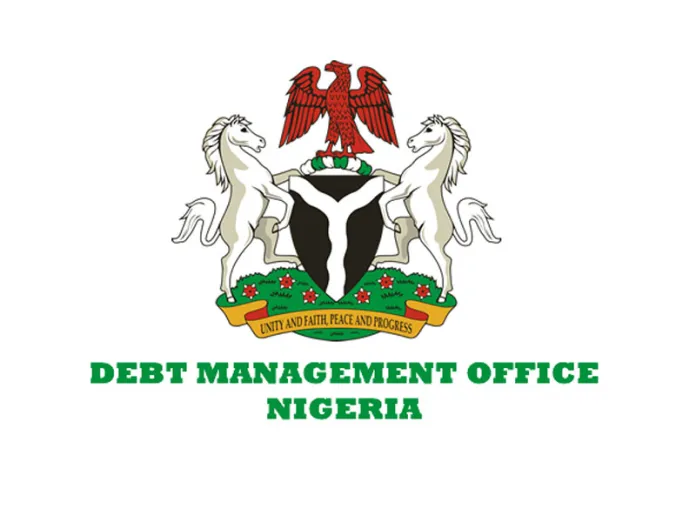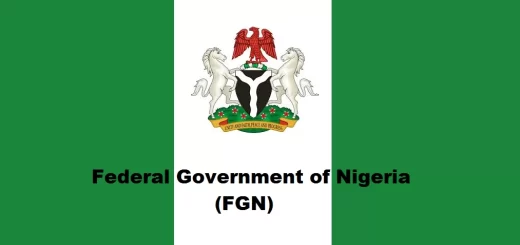Nigeria’s Public Debt Climbs by N2.04trillion in first Quarter to N41.6trillion

Nigeria’s total public debt stock, comprising the debt obligations of the federal government, states and the Federal Capital Territory (FCT) rose from N39.56 trillion in December 2021 to N41.60 trillion ($100.07 billion) in the first three months of 2022 (January to March), the Debt Management Office (DMO) revealed yesterday.
In addition, the domestic debt service obligations of the federal government stood at N668,685, 710,112.98 in the first three months of 2022.
According to the DMO, with the increase in the country’s debt profile, its total public debt-to-gross domestic product (GDP) now stands at 23.27 per cent, as against 22.43 per cent December 31, 2021.
The DMO, in a statement posted on its website explained: “The amount represented the domestic and external debt stocks of the Federal Government of Nigeria, the 36 state governments and the Federal Capital Territory. The comparative figures for December 31, 2021, were N39.56 trillion or $95.78 billion.”
The total public debt stock, the agency said, included new domestic borrowing by the FGN to partly finance the deficit in the 2022 Appropriation Act, the $1.25 billion Eurobond issued in March 2022 and disbursements by multilateral and bilateral lenders.
According to data posted by the DMO, the federal government’s total domestic debt as at March 31, 2022, stood at N20.144 trillion (N20,144,027,724,703).
In the same vein, the federal government’s domestic debt service of N668,685 billion for the review period was for Nigerian Treasury Bills (NTBs), Federal Government Bonds, FGN Savings Bond, and FGN Sukuk Rentals.
A breakdown of the debt service obligations showed that N188,364,772,069.17 was paid out in January, N103,883,183,876.20 in February and N376,437,754,167.61 in March.
Federal government bonds accounted for the lion share of N630,535,774,886.21 followed by NTBs with N29,642,197,193.31 and FGN Sukuk Rentals N8,167, 315,066.60. Similarly, FGN Savings Bond took the rear with N340,422,964.8 million. Total debt service for NTBs in January was N3,220,890,038.78, while February and March were N7,23, 906,633.90 and N19, 189,400,520.63.
For Federal Government Bonds, a total debt service of N185,026,886,879.94 was paid in
January, N96,527,951,065.07 in February, and N348,980,936,941.20 in March. Also, the DMO data showed that FGN Savings Bond gulped debt service of N116,995,150.45 in January, N123, 326,177.23 in February and N100,101, 637.18.
There was no debt service pay out for FGN Sukuk Rentals in January and February, but in March, a total of N8,167, 315,066.60 was paid.
Meanwhile, Nigeria’s external debt stock as at March 31, 2022 stood at $39,969.19 billion.
This comprised debts for multilateral and bilateral creditors as well as commercial loans.
Nigeria owes the largest chunk of $18,957.22 billion to multilateral creditors, including the World Bank Group, International Monetary Fund (IMF), African Development Bank, European Development Fund Arab Bank for Economic Development in Africa, Islamic Development Bank, and the International Fund for Agricultural Development (IFAD).
Out of the $18,957.22 billion owed multilateral agencies, $12,229.43 billion and $486.10 million respectively to the International Development Association (IDA) and the International Bank for Reconstruction and Development (IBRD)- two members of the World Bank Group.
It is also indebted to the International Monetary Fund (IMF) to the tune of $3,395.08 billion and $4 495.87 billion to bilateral creditors, including China Exim Bank $3,667.65 billion), Agency Francaise Development of France ($567.89 million) and KfW of Germany ($164.04 million), among others.
Nigeria’s second external debt obligation were commercial loans, standing in excess of $15.918 billion. This included Eurobonds and Diaspora Bond.
Meanwhile, the World Bank Group has slashed its global growth forecast to 2.9 per cent for 2022, 1.2 percentage points lower than the 4.1 per cent it had predicted in January.
In its latest Global Economic Prospects report, the bank warned that the world economy could slip into a period of stagflation reminiscent of the 1970s.
According to the report, against the challenging backdrop of higher inflation, weaker growth, tighter financial conditions, and limited fiscal policy space, governments across the world would need to reprioritise spending toward targeted relief for vulnerable populations.
Stagflation occurs when there is a steep rise in inflation rate, slow economic growth rate, and unemployment remains steadily high.
The June Global Economic Prospects predicted growth in Sub-Saharan Africa to moderate to 3.7 per cent in 2022 and rise to 3.8 per cent in 2023.
The report noted that the Russia-Ukraine war was compounding the damage from the COVID-19, leading to higher inflation and tighter financial conditions.
“The Russian invasion of Ukraine has magnified the slowdown in the global economy, which is entering what could become a protracted period of feeble growth and elevated inflation.
“This raises the risk of stagflation, with potentially harmful consequences for middle- and low-income economies alike.
“Global growth is expected to slump from 5.7 per cent in 2021 to 2.9 per cent in 2022— significantly lower than 4.1 per cent that was anticipated in January.
“It is expected to hover around that pace over 2023-24, as the war in Ukraine disrupts activity, investment, and trade in the near term, pent-up demand fades, and fiscal and monetary policy accommodation is withdrawn,” the report stated.
As a result of the damage from the pandemic and the war, it stressed that the level of per capita income in developing economies this year would be nearly five per cent below its pre-pandemic trend.
Commenting, the World Bank President, David Malpass said: “The war in Ukraine, lockdowns in China, supply-chain disruptions, and the risk of stagflation are hammering growth. For many countries, recession will be hard to avoid.
“Markets look forward, so it is urgent to encourage production and avoid trade restrictions. Changes in fiscal, monetary, climate and debt policy are needed to counter capital misallocation and inequality.”
The June Global Economic Prospects report offers the first systematic assessment of how current global economic conditions compare with the stagflation of the 1970s — with a particular emphasis on how stagflation could affect emerging market and developing economies.
The report observed that recovery from the stagflation of the 1970s required steep increases in interest rates in major advanced economies, which played a prominent role in triggering a string of financial crises in emerging market and developing economies.
According to the Director of the World Bank’s Prospects Group, Ayhan Kose, “Developing economies will have to balance the need to ensure fiscal sustainability with the need to mitigate the effects of today’s overlapping crises on their poorest citizens.
“Communicating monetary policy decisions clearly, leveraging credible monetary policy frameworks, and protecting central bank independence can effectively anchor inflation expectations and reduce the amount of policy tightening required to achieve the desired effects on inflation and activity.”
The report noted that current global economic situation resembles the 1970s in three key aspects: persistent supply-side disturbances fueling inflation, preceded by a protracted period of highly accommodative monetary policy in major advanced economies, prospects for weakening growth, and vulnerabilities that emerging market and developing economies face with respect to the monetary policy tightening that would be needed to rein in inflation.
However, it pointed out that the ongoing episode also differs from the 1970s in multiple dimensions: the dollar is strong, a sharp contrast with its severe weakness in the 1970s; the percentage increases in commodity prices are smaller; and the balance sheets of major financial institutions are generally strong.
It added that more important was that, unlike the 1970s, central banks in advanced economies and many developing economies now have clear mandates for price stability, and had over the past three decades, established a credible track record of achieving their inflation targets.
The report projected that global inflation was expected to moderate next year, but would likely remain above inflation targets in many economies.
It stressed that if inflation remained elevated, a repeat of the resolution of the earlier stagflation episode could translate into a sharp global downturn along with financial crises in some emerging market and developing economies.
The report also offered fresh insights on how the Russia-Ukraine war’s effects on energy markets are clouding the global growth outlook.
It said: “The war in Ukraine has led to a surge in prices across a wide range of energy-related commodities. Higher energy prices will lower real incomes, raise production costs, tighten financial conditions, and constrain macroeconomic policy especially in energy-importing countries.
“Growth in advanced economies is projected to sharply decelerate from 5.1 percent in 2021 to 2.6 per cent in 2022—1.2 percentage point below projections in January. “Growth is expected to further moderate to 2.2 percent in 2023, largely reflecting the further unwinding of the fiscal and monetary policy support provided during the pandemic.
“Among emerging market and developing economies (EMDES), growth is also projected to fall from 6.6 per cent in 2021 to 3.4 percent in 2022—well below the annual average of 4.8 per cent over 2011-2019.
“Also, the negative spillovers from the war will more than offset any near-term boost to some commodity exporters from higher energy prices, the report said, adding that
forecasts for 2022 growth have been revised down in nearly 70 per cent of EMDEs, including most commodity importing countries as well as four-fifths of low-income countries,” it added.
The report highlighted the need for decisive global and national policy action to avert the worst consequences of the war in Ukraine for the global economy. This, it stated would involve global efforts to limit the harm to those affected by the war, to cushion the blow from surging oil and food prices, to speed up debt relief, and to expand vaccinations in low-income countries.
It would also involve vigorous supply responses at the national level while keeping global commodity markets functioning well.







